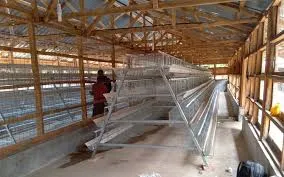scalding tank poultry
Dec . 12, 2024 10:25 Back to list
scalding tank poultry
Understanding Scalding Tanks in Poultry Processing
In the poultry processing industry, one vital step is the scalding of birds, which involves immersing them in hot water to facilitate feather removal. This process is typically carried out in scalding tanks, which play a crucial role in ensuring both the efficiency and humane treatment of animals, as well as the quality of the final product. This article will delve into the significance of scalding tanks, their functioning, and the considerations that must be taken into account to optimize performance in poultry processing plants.
What is a Scalding Tank?
A scalding tank is essentially a large vessel filled with water at controlled temperatures, designed specifically for the poultry processing industry. The primary purpose of this tank is to scald the birds after they have been bled, which is part of the processing sequence following slaughter. The water in the tank is typically heated to temperatures ranging from 140°F to 160°F (60°C to 71°C). This temperature range is crucial as it helps to loosen the feathers while rendering the skin pliable for subsequent processing steps.
The Scalding Process
When birds are introduced into the scalding tank, the hot water penetrates the skin and into the feather follicles. This process causes the proteins in the feathers to denature, making them easier to remove during the plucking stage. The duration of immersion is critical; too long can lead to skin damage, while too short can result in incomplete feather removal. The standard scalding time varies but typically lasts anywhere from 30 seconds to several minutes, depending on the bird species and size.
Types of Scalding Tanks
scalding tank poultry

Scalding tanks can be classified into two primary types batch and continuous systems. Batch systems process a specific quantity of birds at one time, which is suitable for smaller operations. On the other hand, continuous systems allow for a constant flow of birds through the tank, which is more efficient for larger processing facilities. Continuous systems are often preferred as they can enhance productivity and reduce labor costs.
Regulatory and Welfare Considerations
The use of scalding tanks is subject to various regulations aimed at ensuring animal welfare. The temperature of the water must be carefully monitored to prevent suffering and stress to the birds. Additionally, the processing facility must implement measures such as stunning prior to slaughter, to minimize pain and distress. Compliance with guidelines set forth by organizations such as the American Humane Association and the Humane Society International is essential for maintaining ethical standards in poultry processing.
Optimizing Scalding Tank Performance
Maintaining the efficiency of the scalding tank involves regular monitoring and maintenance. Factors such as water temperature, tank cleanliness, and scalding duration must be routinely checked to ensure optimal performance. The introduction of automated temperature control systems can significantly improve consistency and efficiency in scalding operations. Moreover, periodic cleaning of the tank helps to prevent the buildup of biofilms and contaminants, ensuring a hygienic environment that meets industry standards.
Conclusion
Scalding tanks serve a fundamental role in the poultry processing industry, impacting both the productivity of operations and the quality of the final product. Through careful management of temperature, duration, and tank maintenance, processors can ensure effective feather removal while adhering to standards of animal welfare. As technology advances, the potential for improving scalding efficiency continues to grow, promising advancements that could benefit both producers and consumers alike. Understanding the intricacies of scalding tanks is essential for anyone involved in poultry processing, as it directly influences the overall success of the industry.
-
Hot Sale 24 & 18 Door Rabbit Cages - Premium Breeding Solutions
NewsJul.25,2025
-
Automatic Feeding Line System Pan Feeder Nipple Drinker - Anping County Yize Metal Products Co., Ltd.
NewsJul.21,2025
-
Automatic Feeding Line System Pan Feeder Nipple Drinker - Anping County Yize Metal Products Co., Ltd.
NewsJul.21,2025
-
Automatic Feeding Line System - Anping Yize | Precision & Nipple
NewsJul.21,2025
-
Automatic Feeding Line System - Anping Yize | Precision & Nipple
NewsJul.21,2025
-
Automatic Feeding Line System-Anping County Yize Metal Products Co., Ltd.|Efficient Feed Distribution&Customized Animal Farming Solutions
NewsJul.21,2025






